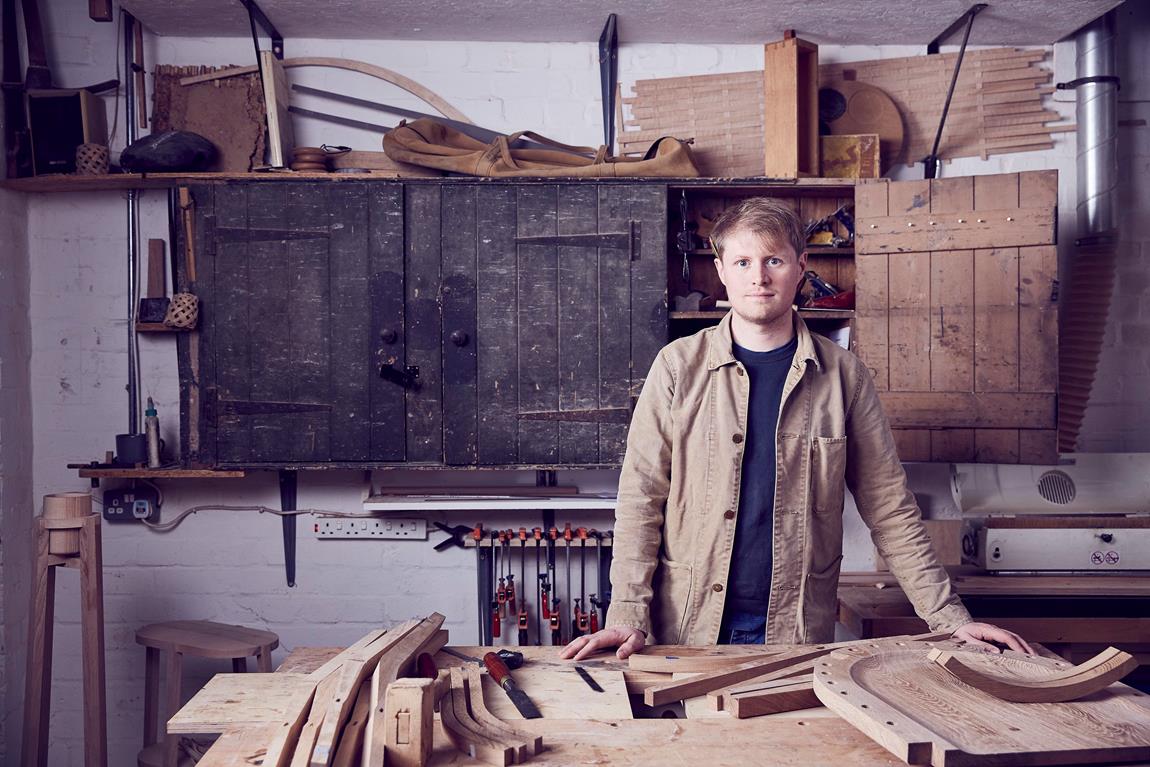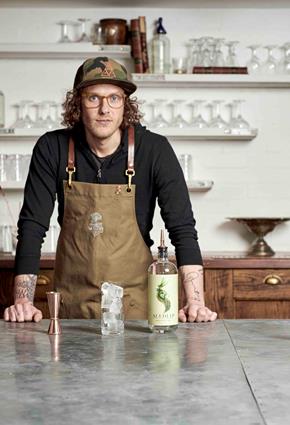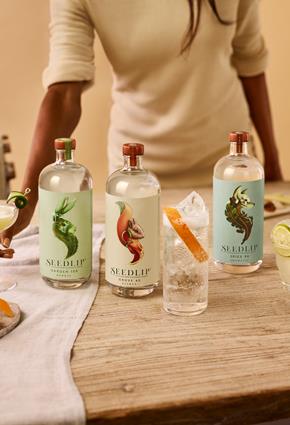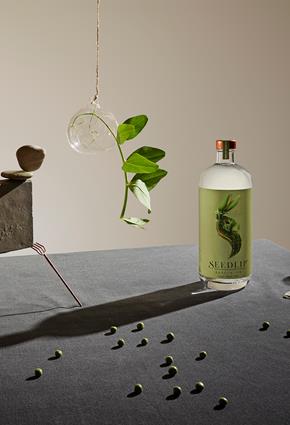Using ancient ways of working with wood, Sebastian Cox and his team make furniture, lighting and accessories with a contemporary aesthetic in a design studio and workshop in South East London.
Inspired by an ancient woodland he has managed for five years, Seb is passionate about championing British woodland and giving fallen trees a new lease of life, but there is more to it than simply creating beautiful furniture. The studio actively combats biodiversity loss & regularly assesses Sebastian Cox products to measure the carbon value of their work by calculating the amount of CO2 emitted in the creative process and then stored in finished pieces. Seb has also experimented with mycelium to make light shades that are entirely natural and completely compostable.
In this Six with Seedlip, we caught up with Seb to chat all things nature and find out why it is important to champion British woodland.
I. Where do you go to immerse yourself in nature?
When I really want to immerse myself in the natural world, I take a trip to the KNEPP estate in East Sussex. It’s the estate documented in a book called Wilding by Isabella Tree. This book describes how our landscape once looked and could look if landowners thought differently about how they use the land.
KNEPP is a landscape shaped by free-roaming animals. You will find wild cattle, horses and pigs that disturb and stimulate the ground and what grows there. They now have some really rare species of bird and butterfly on the estate as a result of the grazing animals that live there. What I love most is that you get to experience the animals up close, putting you in touch with what our ancestors would have experienced when walking through the same landscape in the early Holocene, or just after the last Ice Age.
The other place that I might go would be our ancient woodland in Kent which we’ve been managing for the last five years. It’s a very peaceful place and when I go there, I get to see and enjoy the benefits of our work over the last few years.
II. What is it about British woodland that fascinates you?
What fascinates me most about British woodland is coppicing, a method of woodland management that we’ve been practicing in the UK for thousands of years. It is effectively pruning trees at ground level after which they regrow vigorously without any replanting. Coppicing is associated to a series of crafts and skills that used to be the backbone of much of our rural material culture for a least the last thousand years.
When woolly mammoth walked the earth, they would push over and disturb trees. Our woodlands learned to regrow from this. Accidentally over the last couple of thousand years, we’ve been mimicking that mammoth behaviour with our axes by practicing coppicing and stimulating biodiversity as we go. This amazing symbiosis means that we now have a commercially useful resource [coppiced wood] that we can also use to stimulate biodiversity.
III. What do you love most about the work you do?
The thing I love most about what we do is that every piece of furniture that we sell makes our world a better place. I’ve calculated roughly that we’ve tied up 200 tonnes of carbon dioxide in furniture; storing them in pieces in people’s homes. That feels like a massive achievement when the biggest issues we face today are climate change and biodiversity loss. To have a business which actively tries to combat those issues is something I’m proud of.
IV. Why did you want to explore the development of compostable furniture?
Originally, I wanted to find uses for perishable coppiced wood, the very fine branches within our harvest which we normally turn into habitat piles in the woodland or occasional bonfires; the material that you can’t make furniture with. Through material investigation and research into bio facture we created a compound material that we now use to make lights and stools. Here we are growing objects rather than manufacturing them.
We take coppiced wood material and chip it up, sterilise it and then inoculate it. We then introduce mycelium, the growing part of a mushroom, which grows through the material binding it together.
The potential and opportunities of this compound material are endless from packaging to compostable coffins.
V. Tell us your best nature fact
The UK has a rainforest. A rainforest is defined as a woodland wet enough to support plants that grow on other plants or epiphytes. Wales has many of the UK’s rainforest, and if we rewilded land currently dedicated to sheep farming, we could have many more.
VI. Who would you most like to go for a cocktail with?
I would most like to go for a cocktail with William Morris, but as he is no longer with us my second choice would be Dan Barber, the American chef and writer of The Third Plate. His book is enormously eye-opening in terms of how we should be reshaping and rethinking our food production. That book has even inspired me to rethink how we might reshape our material production. Dan has an amazing restaurant in New York at the Stone Barns Centre for Food and Agriculture where I’d love to visit and have a drink with him.
Visit sebastiancox.co.uk
@sebastiancoxltd on Instagram




